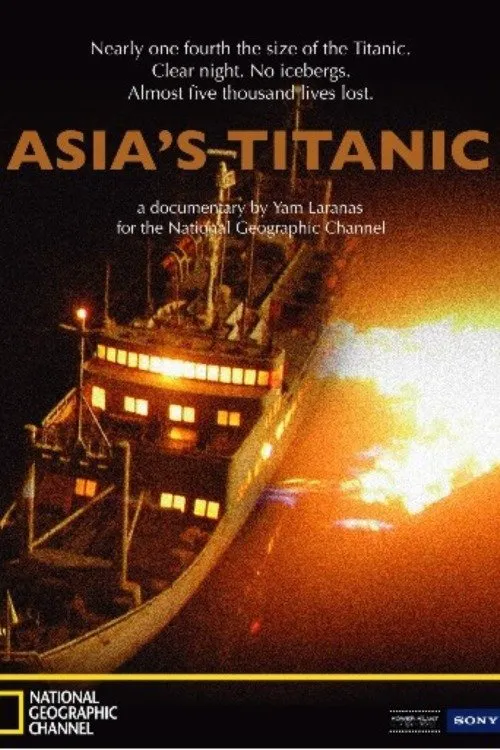Asia's Titanic

Enredo
Asia's Titanic is a documentary film that recounts one of the most devastating maritime disasters in history. On December 20, 1987, the Philippine-registered passenger ship Doña Paz collided with the oil tanker MT Vector off Mindoro Island in the Philippines. The catastrophic event would ultimately claim the lives of over 4,000 passengers, marking it as the world's worst peacetime maritime disaster. The Doña Paz was a chartered passenger ferry with a capacity to carry around 1,500 passengers. However, on this fateful night, the ship was carrying a significantly large number of people, with reports estimating that over 4,000 people were on board. To make matters worse, the ship was carrying a significant number of inebriated passengers, who were celebrating the end of the year in high spirits. This excessive drinking added to the chaos that ensued during the disaster. According to eyewitness accounts, the Doña Paz was traveling at a significant speed when it suddenly swerved to avoid a wooden barge in the vicinity. The ship then collided with the oil tanker MT Vector, which was carrying over 8,000 barrels of gasoline. The explosion that ensued was massive, with flames engulfing the passenger ship and creating a wall of fire that blocked the exits. Survivors of the tragedy described the horror they witnessed that night. They recounted the scene of pandemonium on board, with people screaming and panicking as the fire spread rapidly. Many survivors were trapped inside the burning ship, unable to escape due to the intense flames and the lack of working emergency exits. Rescuers who arrived on the scene described the devastating aftermath of the tragedy. The oil tanker was left afloat, still carrying its cargo of gasoline. The Doña Paz, on the other hand, was a smoldering wreck, with the remains of the ship's passengers scattered all over the surface of the water. Many bodies were later recovered, but the majority remain unaccounted for, lost at the bottom of the ocean. The Philippine Navy and Coast Guard were quick to respond to the disaster, but their efforts were hindered by the sheer scale of the tragedy. Many survivors died from burns, drowning, or asphyxiation. The few who managed to escape were left to fend for themselves, with no clear plan in place to support the numerous survivors. In the aftermath of the disaster, the Philippine government launched an inquiry to investigate the tragedy. The Doña Paz sank just five days before Christmas in 1987, and it would take many years for the full truth to come to light. The inquiry revealed a litany of errors on the part of the shipping company, the Philippine government, and other regulatory bodies. The investigation highlighted a series of systemic problems that contributed to the tragedy, including lax regulations, inadequate safety measures, and a culture of recklessness within the Philippine shipping industry. One of the most damning revelations from the investigation was the fact that the Doña Paz had been operating despite a string of safety violations. The ship's owner, Sulpicio Lines, had a history of violating safety regulations, but nothing was done to hold the company accountable. The Doña Paz's crew was also inadequately trained and experienced, which added to the likelihood of the disaster. The Doña Paz tragedy had a profound impact on the Philippines and the world. It led to a significant overhaul of the country's maritime regulations, with stricter safety measures and better enforcement put in place. The disaster also raised awareness about the risks associated with overloading and lax safety standards on passenger ships. The Doña Paz's legacy serves as a poignant reminder of the importance of safety on the high seas. The catastrophic event continues to haunt the survivors, who were left to grapple with the trauma of living through one of the worst maritime disasters in history. Asia's Titanic is a documentary that offers a powerful tribute to the victims of the Doña Paz and serves as a reminder of the human cost of this tragedy. Through its use of archival footage, personal accounts, and re-enactments, the documentary brings the tragedy to life, putting a human face to the staggering statistics that define this horrific event.
Resenhas
Recomendações


